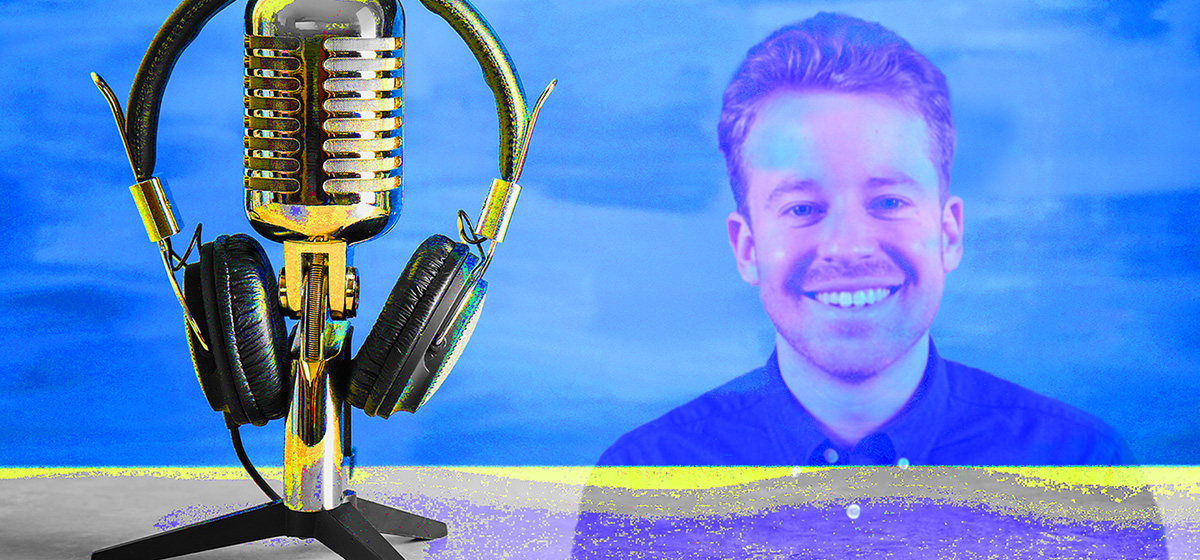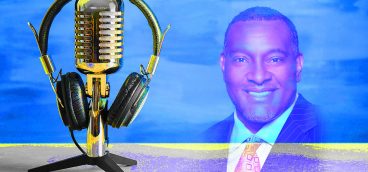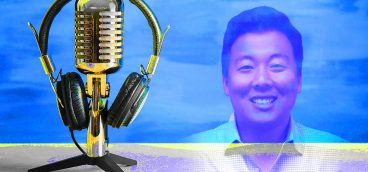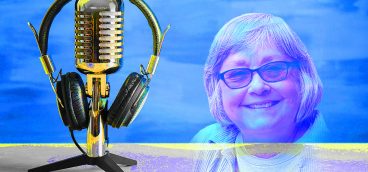Re-Imagining Pittsburgh, Disney Style

Donald Bonk interviews Brian Gaudio, co-founder and CEO of Module, as part of the Pittsburgh Tomorrow podcast series. This interview was conducted before COVID-19. The transcript is abridged and edited for clarity.
View the episode archive here. View Brian Gaudio’s profile here.“We have AI and robotics here, and that’s a big component of our 21st century economy, but that’s not big enough. What if we created time travel here in Pittsburgh?” – Brian Gaudio, co-founder and CEO, Module, and former Disney Imagineer
Donald Bonk: This is Donald Bonk of the Pittsburgh Tomorrow Project with Brian Gaudio, co-founder and CEO of Module.
Brian Gaudio: I’m originally from Pittsburgh—the South Hills. I was trained as an architect and worked for several years out of school on the West Coast at Walt Disney Imagineering, designing the Disney theme parks. It was super fun and super creative. I spent time in Biloxi, Mississippi, doing disaster recovery housing, and in the Dominican Republic doing a Fulbright and doing research about green infrastructure and disaster mitigation.
I found my way back to Pittsburgh in 2015 to start Module, a company based in the East End. We are redesigning homeownership for the 21st century. We are taking infill vacant lots in the city of Pittsburgh and turning them into productive, sustainable housing.
Bonk: There are these blank or empty, vacant lots that aren’t in taxation necessarily, or if they are, at a very low level taxation; you’re adding a value-added product, but also addressing a creative solution to the housing issue in Pittsburgh.
Gaudio: That’s right. Once the steel industry started to collapse, at least in the United States, there was a lot of disinvestment that left us with approximately 30,000 vacant lots. That was as of maybe two years ago.
Bonk: And you’re trying to find creative, maybe even a Disney Imagineer’s way of thinking about how to repurpose that space for housing.
Gaudio: Yes.
Bonk: That really helps set the picture. So now we’re going to dive a little bit into our focus, which is Pittsburgh Tomorrow. What would make Pittsburgh the ideal city or the best city in the world?
Gaudio: I actually asked my team today at work; I posed this question to them as well. I think what Pittsburgh has going for it is quality of life right now. There’s a high quality of life compared to some other cities, but what we’re missing is sunshine. We’re one of the rainiest, cloudy cities in the country.
We have a great quality of life here. We have some smart people here. We have some unique history in Pittsburgh. And I love the character that Pittsburgh has. Can we maintain that and have sunshine 340 days out of the year?
Bonk: How would that be possible? I know that China and other countries have looked into climate and weather transformations; is that what you’re thinking about?
Gaudio: That could be one option—some kind of climate adaptation to create a microclimate here in Pittsburgh. I’m sure at CMU we could create some weather device that could bring sunshine to Pittsburgh. The other option is, could we take a knife and carve out Pittsburgh and the rivers, remove that from where we are, and place it into a longitude or latitude that is sunnier?
Bonk: OK, so those are big science fiction kind of answers, but that’s what we have this series for. So to make Pittsburgh the ideal city, we either bring the sunshine to Pittsburgh through some magical or creative scientific means, or take Pittsburgh to the sunshine.
Gaudio: That’s right.
Bonk: That is definitely a new one for our series. The next question we have is the moonshot idea. Give me one big idea that changes the direction and narrative for Pittsburgh in a really creative way.
Gaudio: U.S. Steel and Andrew Carnegie was the first moonshot for Pittsburgh. So I thought something on that scale had to happen. We have AI and robotics here, and that’s a big component of our 21st century economy, but that’s not big enough. What if we created time travel here in Pittsburgh? What if we created a vehicle that people could use to travel time, right here in Pittsburgh?
Bonk: Much as we’re trying to do in our imagination right now. But you’re talking the real thing. You’re talking H.G. Wells (The Time Machine) with the levers, and to be able to go visit or see the past, present and future.
Gaudio: And the portal is here in Pittsburgh. So that’s the key—you come to Pittsburgh to visit the future or visit the past. That can be really powerful. That would attract jobs, that would attract growth, and it would just put Pittsburgh on the map. I mean, even monetizing that the way that steel was monetized would be astronomical.
Bonk: So it’s kind of like Stargate (T.V. show)? There is this portal that you can enter or leave from, and Pittsburgh would be the landing dock for that or however you want to describe it.
Gaudio: Yeah.
Bonk: Wow, that’s a moonshot beyond the moon and literally into time and back, and into the future, either direction.
Gaudio: There might be so many economies that spring up from being able to travel time. If you could visit there, it could be about visiting family right, in the past or the future. There are just so many opportunities, so many businesses and so many things that could be created or solved from that.
Bonk: You said you spent time at Disney as an Imagineer, and that’s definitely a Disney Imagineer type idea for Pittsburgh. I mean, that really is a game changer if there ever was one.
Gaudio: I think so.
Bonk: Now we’re going to go down to the more practical level. The practical level is 1990 to 2050, equidistant; the next three decades, the 2020s, 2030s, 2040s, up to that magic date, 2050. Looking at that span, are there three down-to-earth and practical ideas that you can think about that can move Pittsburgh forward?
Gaudio: This is another one that I asked my team about. Three things: First is an improved light rail/subway system from downtown to Oakland. It could be above or below ground—just a high-speed transit system that is some type of light rail.
And then having that trickle out to some of the other neighborhoods, because I think connectivity in our city, because we have rivers and hills, is a challenge.
The second one would be the rivers. One of my co-founders, Drew, moved to Pittsburgh from Seattle, and Seattle makes great use of its water space. Pittsburgh has come a long way, obviously… How do we transform the rivers from industrial to recreational? We’re not really there yet. How many restaurants do you know that are right on the banks of the river?
That would be the second one: bringing recreation, leisure, dining and culture to the water’s edge.
The third one is bringing more cultural and racial diversity to Pittsburgh. I’m a white male running a business in Pittsburgh. When folks come here from New York or other places, they say, “I think Pittsburgh is great, but I’d like to see more people who may look or feel like me and or, are, from another country.”
So it would be interesting to see a new subway line that goes to Oakland, and see and talk to and hear all the different kinds of people living here.
Bonk: Is there anything else that you want to share about your sense of what Pittsburgh can or should look like in the future?
Gaudio: Part of why I moved back to Pittsburgh was that San Francisco underwent some explosive growth as it relates to technology companies. That growth has put Silicon Valley on the map, but it’s also made it unlivable for many people in the city.
My question would be, how can Pittsburgh grow responsibly and sustainably? That’s the biggest question that I have for our city leadership and for the people who are living and working here.
Finally, thank you for going around and documenting all of these stories from people from around the region. I think it’s really exciting.
Bonk: It’s a passion project, and as I said, I’d like to see this project be a tour guide to the future. We talked about time travel earlier in this discussion, but this is a form of time travel. We’re talking to people of different ages, races, backgrounds, ethnicities and job descriptions with the idea that we are getting their best imaginative Disney Imagineer thoughts, if you will, about what the future of Pittsburgh can be.





